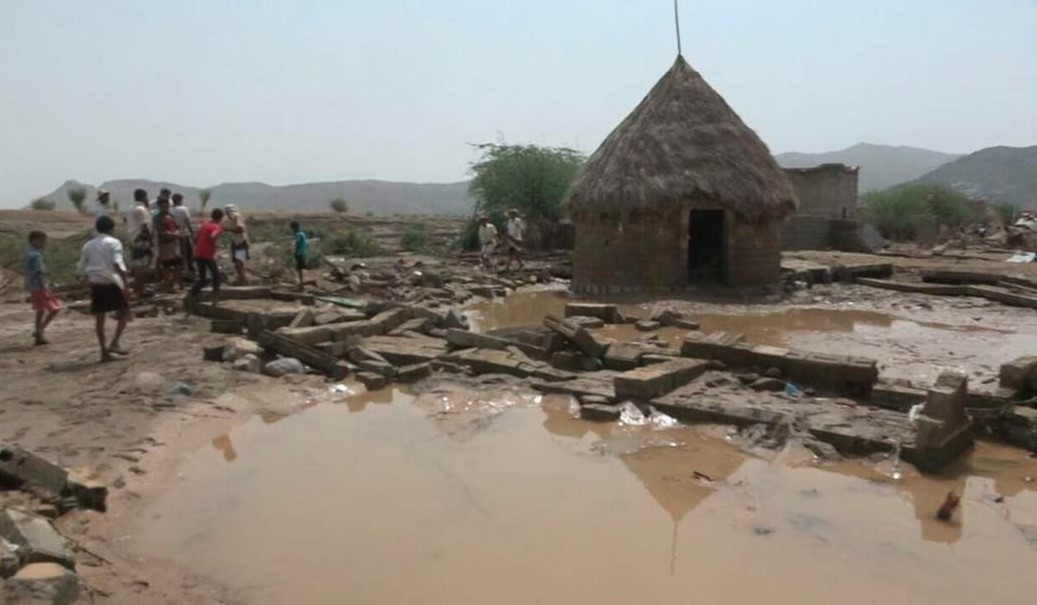الفاو: خطر حدوث فيضانات مفاجئة في اليمن لايزال كبيراً خلال الأيام القادمة
محلية | 3 سبتمبر, 2024 - 11:32 ص
يمن شباب نت

 تعز.. لجنة المصالحة تدين التفجير الإرهابي الذي استهدف مقر الإصلاح
تعز.. لجنة المصالحة تدين التفجير الإرهابي الذي استهدف مقر الإصلاح  العليمي يحذر: الإجراءات الأحادية للمجلس الانتقالي بلغت مرحلة خطيرة
العليمي يحذر: الإجراءات الأحادية للمجلس الانتقالي بلغت مرحلة خطيرة  على رأسهم محمد قحطان.. الإعلان عن اتفاق بين الحكومة اليمنية والحوثيين للإفراج عن 2900 محتجز وأسير
على رأسهم محمد قحطان.. الإعلان عن اتفاق بين الحكومة اليمنية والحوثيين للإفراج عن 2900 محتجز وأسير  في خطاب يفتقر للباقة الدبلوماسية.. أكاديمي إماراتي يطالب العليمي السماح بتقسيم اليمن ومغادرة المشهد السياسي
في خطاب يفتقر للباقة الدبلوماسية.. أكاديمي إماراتي يطالب العليمي السماح بتقسيم اليمن ومغادرة المشهد السياسي  البنك المركزي يسحب تراخيص فروع شركتي صرافة مخالفة في عدن ومأرب
البنك المركزي يسحب تراخيص فروع شركتي صرافة مخالفة في عدن ومأرب  منظمة دولية: 1800 طفل يولدون يومياً في اليمن هذا العام في ظروف صعبة
منظمة دولية: 1800 طفل يولدون يومياً في اليمن هذا العام في ظروف صعبة 
 تعز.. لجنة المصالحة تدين التفجير الإرهابي الذي استهدف مقر الإصلاح
تعز.. لجنة المصالحة تدين التفجير الإرهابي الذي استهدف مقر الإصلاح  العليمي يحذر: الإجراءات الأحادية للمجلس الانتقالي بلغت مرحلة خطيرة
العليمي يحذر: الإجراءات الأحادية للمجلس الانتقالي بلغت مرحلة خطيرة  على رأسهم محمد قحطان.. الإعلان عن اتفاق بين الحكومة اليمنية والحوثيين للإفراج عن 2900 محتجز وأسير
على رأسهم محمد قحطان.. الإعلان عن اتفاق بين الحكومة اليمنية والحوثيين للإفراج عن 2900 محتجز وأسير  في خطاب يفتقر للباقة الدبلوماسية.. أكاديمي إماراتي يطالب العليمي السماح بتقسيم اليمن ومغادرة المشهد السياسي
في خطاب يفتقر للباقة الدبلوماسية.. أكاديمي إماراتي يطالب العليمي السماح بتقسيم اليمن ومغادرة المشهد السياسي  البنك المركزي يسحب تراخيص فروع شركتي صرافة مخالفة في عدن ومأرب
البنك المركزي يسحب تراخيص فروع شركتي صرافة مخالفة في عدن ومأرب  منظمة دولية: 1800 طفل يولدون يومياً في اليمن هذا العام في ظروف صعبة
منظمة دولية: 1800 طفل يولدون يومياً في اليمن هذا العام في ظروف صعبة 
محلية | 3 سبتمبر, 2024 - 11:32 ص
يمن شباب نت
